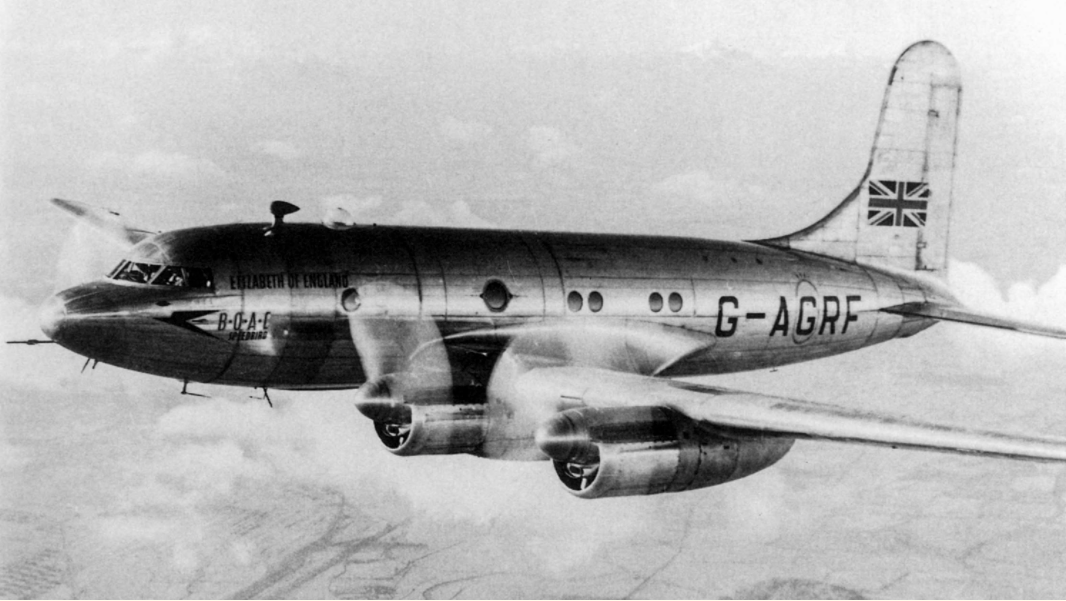The Two Missing Planes That Helped Create The Bermuda Triangle
The disappearance of a British Airways Avro Mark IV was the second of two vanishing airliners. Are we any closer to knowing what happened today?

An Avro 688 Mark IV similar to both aircraft that disappeared near Bermuda one year apart in the late 1940s under mysterious circumstances. Photo Courtesy Of BAE Systems.
The Mystery
What happened to the British South American Airlines (BSAA) flight that disappeared on Jan. 17, 1949, and could its fate be tied to that of another BSAA flight that vanished almost exactly a year earlier?
Background
It was an otherwise lovely Monday morning when Captain John Clutha McPhee prepared his Avro 688 Tudor Mark IV aircraft, Star Ariel, for a flight from Kindley Field, Bermuda, to Kingston, Jamaica. The weather was idyllic across the planned route---calm, clear skies with no incoming storms. Star Ariel was supposed to be grounded that day, but the plane originally scheduled for the flight, BSAA Star Lion, had suffered an engine failure on its approach to Bermuda, though it had landed without incident.
With 13 passengers and six additional crew onboard, the Avro departed Bermuda at 8:41 a.m. About an hour into the flight, McPhee contacted air traffic control to report his current position and flight level at 18,000 feet. He noted good visibility and provided an ETA to Jamaica. About 10 minutes later, he sent his final transmission:
"Over 30°N at 9:37!changing frequency to MRX."
But Kingston never heard from him, and he failed to make the destination. According to a New York Times article dated Jan. 19, 1949, a massive search took place across an area 125 to 500 miles southwest of Bermuda. The search involved more than 70 planes and ships, including U.S. and Cuban naval ships, and covered thousands of square miles. No wreckage, debris or bodies were ever found.
Adding to the intrigue is that another BSAA flight, Star Tiger, disappeared from the same area one year (almost to the day) prior. Its fate, likewise, remains a mystery.
Bermuda Triangle Theory
The back-to-back disappearances of these two aircraft fueled the start of mystical conspiracy theories around an area of the Atlantic Ocean now famously known as the "Bermuda Triangle." Also nicknamed the "Devil's Triangle," the region is a loosely defined triangle between Bermuda, Puerto Rico and the southern tip of Florida. While the number of accidents and disappearances within the Triangle are not statistically much higher than in other locations throughout the Atlantic, many believe that something paranormal is at play.
The initial investigators in Star Ariel's disappearance inadvertently sparked such speculation when, in a moment of frustration, they mused that "some external cause overwhelmed both man and machine." While they didn't really believe the disappearance was tied to anything paranormal, it didn't matter---the media clamped on to the idea, and the public's imagination ran wild.
Sabotage Theory
Sir Roy Dobson, managing director for the manufacturer of the Tudor IV aircraft, and his colleague, Don Bennett, came forth a few days after the disappearance with claims that the aircraft had been sabotaged. There had been quite a bit of controversy around the Tudor fleet when it first went into commercial flight service four years prior, as it was made with wings of the Royal Air Force Lancaster bomber and would serve as the British competitor to American DC-4s for transatlantic flights.
The men claimed that a well-known saboteur had been spotted near the BSAA Star Tiger shortly before its takeoff the year prior and, as such, they believed someone sabotaged both flights. Investigators wrote off the claims, and Bennett was fired from the BSAA for refusing to back down.
Poor Aircraft Design Theory
In 2009, retired BSAA Tudor IV pilot Don Mackintosh came forward with an interesting insider scoop about the aircraft---it was poorly designed. According to Mackintosh, the cabin heater was designed to bleed fuel onto a hot tube, but the tube was located dangerously close to hydraulic pipes, making it easy for them to become compromised. The system was mounted under the floorboard of the co-pilot's seat and controlled by a pressure switch that, in turn, controlled fuel flow. The switch was notoriously unreliable, leading many pilots to disable it so they could, instead, manually control the system.
Mackintosh theorized that gas may have built up within the system, and when the pilot manually flipped the pressure switch, it caused an explosion. Given the heating system's location under the floorboards, the resulting fire could have easily spread to a catastrophic state before the pilots became aware of it. In those days, automatic extinguishers weren't a thing, so it's quite possible Captain McPhee lost control of the flight before he could put out the fire.
The Truth?
Poor heating system design is the most probable of the leading theories---far more so than paranormal entities of the Bermuda Triangle or even any sabotage claims by those who had clear motivation to cover their own hides.
Unfortunately, the true cause of Star Ariel's disappearance may never be known. Its secrets, like those of so many others, including Star Tiger, are more than likely buried deep within the sea. As for the fleet of Tudor IVs, they had only been back in service for a month before Star Ariel vanished and were immediately regrounded, at which point production of the aircraft permanently ceased. Call it yet another victim of the Bermuda Triangle.
Read "Mysteries of Flight: The Nevada Triangle" to learn more about suspicious plane disappearances.

Subscribe to Our Newsletter
Get the latest Plane & Pilot Magazine stories delivered directly to your inbox






